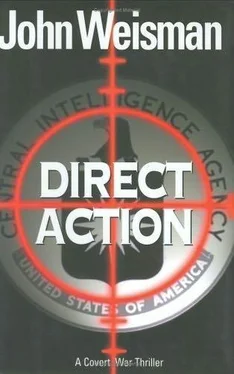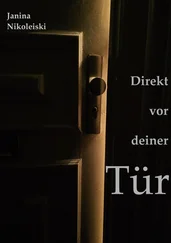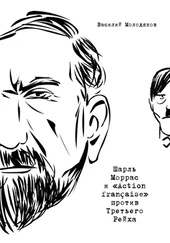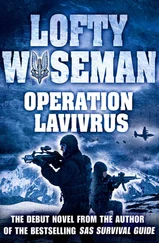He resumed walking, scanning the park as he made his way to a second barricade. Even though he perceived nothing out of the ordinary, Tom’s instincts told him there were DST watchers among the trees and on the benches. It had always been the French agency’s practice to surveil the American embassy. And now that the threat level was elevated, they would have increased their vigilance.
Ten yards later, he was stopped by a second pair of tactical officers, who scrutinized his passport, actually holding it up so they could check the picture against his face. He was allowed to pass. But thirty feet on, at the barrier set just yards from the embassy gate itself, he was stopped a third time and his papers checked, this time by one armed police officer and an Inspector Clouseau look-alike in a baggy brown suit.
Tom counted 362 paces from the Sofitel. It was overkill, of course. The entire embassy compound was ringed by Jersey barriers set so that they would keep even the largest of truck bombs a hundred meters-more than a football field’s length-from the structure itself. There was no way any car-even an embassy vehicle-could approach the outer security perimeter without being checked thoroughly.
Tom held his passport in his right hand and proceeded through the gate. To his right were the steps of the old embassy entrance. The first time he’d been in Paris-it was the early 1970s-he and his parents had walked off the Place de la Concorde and straight up the steps into the huge embassy foyer. No guards. No barriers. No ID checks. Not, at least, until they’d come to Post Number One, where a Marine sergeant in a starched tan shirt and razor-creased blue trousers asked to see their passports.
Now the old entrance was out-of-bounds. Tom was shunted along a narrow walkway to a gatehouse whose only door was built of heavy steel and dark-tinted bulletproof glass. A metallic voice with a French accent came through the three-inch speaker on the right side of the doorpost. “May I ’elp you?”
“I’m here to see Adam Margolis.”
“Do you ’ave an appointment?”
“Yes.”
“Your name?”
Tom recited it.
There was a twenty-second pause followed by a dissonant buzzing as the electronic lock on the door disengaged. Tom pulled at it. The damn thing was heavy. He entered a narrow security lock, manned by two French security contractors. They stood inside a bombproof enclosure, behind a chest-high counter and two-inch Plexiglas windows. Six television monitors displayed the area outside the gatehouse.
“Passport, please.”
A tray emerged from the counter. Tom dropped the document into it. The security agent inspected it, then turned and marched six steps to a photocopier. He laid the passport on the bed, closed the cover, and pressed a button. He checked to see that the copy was good, then laid the sheet in the tray of a fax machine. As the photocopy transmitted, he picked up an embassy phone book, ran his finger down a page, then dialed an extension and said, “Mr. Margolis, you ’ave a visitor, a Mr. Stafford.”
There was a pause. “Bien sûr, monsieur.” The guard returned the passport to Tom. “Please ’ave a seat. Mr. Margolis will be with you in a few mi- nute .”
Tom settled himself on one of the three steel chairs lag-bolted to the wall. The gatehouse counter was U-shaped. Behind and above the desk, hermetically sealed from the gatehouse by another layer of bulletproof glass, was Marine Post Number One. Tom could make out a pair of sergeants looking down at him. He gave them a smile and an offhand wave and got one in return.
To the left and right of the counter were two portals-they were, in fact, metal detector-slash-explosives sniffer units-and ramps that led to steel-and-bombproof glass doors. The one on the left opened onto a ramp leading down to a patio. When Tom had worked at Paris station, the patio, which sat in front of the embassy’s west wing housing the USIA library and cultural center, had been a well-kept garden filled with sculptures and stone benches. Now, in their stead, was a makeshift blast wall: a huge blue steel cargo container-the kind you see on oceangoing cargo ships-probably filled top to bottom with sandbags. Behind the container Tom could see that the glass in the big windows of the USIA cultural center had been replaced with thick plastic. The beautiful glass-and-iron French double doors were chained shut.
Under the watchful eye of the two French security guards, Tom panned over to the opposite side of the gatehouse. To the right of the counter was another steel-and-glass door, which opened onto a ramp that ended in what used to be the embassy’s courtyard and now was used as a small parking lot. Behind the lot were the wide steps that led to the old formal entrance of the embassy. The steps hadn’t been altered. But the entrance itself-which had been in use when Tom had worked there-had been replaced by a pair of utilitarian bombproof doors, in front of which were placed a series of squat, ugly concrete planters-more overkill.
Worse, Tom understood only too well that while these precautions might be perfect so far as the security personnel were concerned, they were an absolute disaster for the intelligence-gathering crew. During Tom’s tenure in Paris, there had been dozens of walk-ins who’d come to the embassy and used the gatehouse telephone to ask to speak to an American political officer.
The embassy operators would always shunt those calls to CIA, which kept a small debriefing room off the main entrance, just inside the consular section. The location gave both case officers and walk-ins deniability. The room had audio and video capability, of course-there were even voice-stress detectors wired into the system. It didn’t take long to separate wheat from chaff, either. Even a half hour of talk was sufficient to have the person’s name and vitals run through the BigPond computer back at Langley. If it became necessary, the walk-in could be taken out through a series of back corridors, which ultimately led to a common wall shared with the British embassy. There, they’d be escorted through a door, walked down a passageway, and deposited at the Brits’ service entrance on the Faubourg du St. Honoré. It was all very slick.
Now it was so hard to gain entrance to the embassy that no sane walk-in would dream of risking his hide by going anywhere near AMEMBASSY Paris. There were watchers in the street-Tom had no doubt al-Qa’ida, Tehran, and who knows who else had the embassy under constant surveil-lance. The bad guys could use teams of taxicabs driven by their agents-there were six cab stands on the Champs and the portions of avenue Gabriel that hadn’t been closed down. They could man static positions by renting rooms at the Crillon (UBL had the budget to go first class, if necessary). They could tag-team watchers moving back and forth. It was probable that any walk-in who approached the compound would be photographed.
The heavy, layered security itself was another inhibitor. The French police demanded identification before anyone could get within a hundred yards of the place. Anonymity was impossible to maintain. When Tom had been posted here, walk-ins could make their way to the consulate or speak to a Marine guard, not be forced to go through a local rent-a-cop. Now the Marines were hermetically sealed beyond the gatehouse, there was no exterior telephone available, and unfettered entry to the consulate was impossible. Which left French security personnel as any walk-in’s initial contact.
Tom had no doubt that the people behind the gatehouse’s U-shaped desk reported to DST. They’d transmitted a photocopy of his passport on the fax before they’d bothered to call Adam Margolis’s office. And to whom, pray tell, had the fax been sent? Tom was certain the bloody French would have completed a computer check on him by the time Adam Margolis came down from the station. DST would know he was going to meet with a CIA officer named Margolis.
Читать дальше












